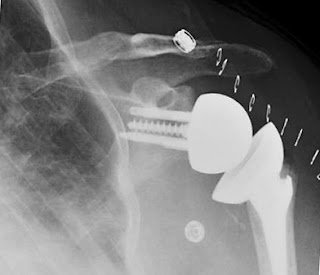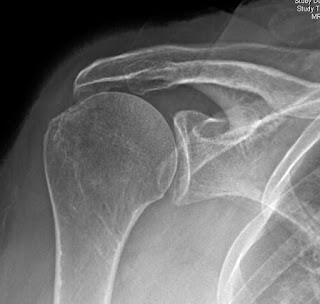These authors point out that inferior glenoid baseplate tilt relative to the coronal axis of the scapular body has been associated with improved results and fewer postoperative complications in reverse shoulder arthroplasty. They evaluated the accuracy of the "subchondral smile" and cannulated surface guide techniques in achieving inferior glenoid baseplate tilt by using 3-dimensional preoperative planning software. Virtual glenoid baseplate preparation and implantation were performed using computed tomography scans of 16 shoulders with rotator cuff deficiency. Two techniques were used: a subchondral smile technique that preferentially reams the interior glenoid, resulting in the appearance of a smile, and a cannulated surface guide technique that references the native glenoid face to place the baseplate in 10° of inferior tilt.
Using the subchondral smile technique, the glenoid baseplate was implanted at a mean of 8.9° of superior tilt relative to the transverse scapular axis. Using the surface guide technique, the glenoid baseplate was implanted at a mean of 2.8° of superior tilt.
Neither the subchondral smile technique nor the 10° cannulated surface guide technique is a reliable method to produce inferior glenoid tilt relative to the transverse axis of the scapula.
They suggest that three-dimensional preoperative planning software may be useful for glenoid baseplate positioning in reverse shoulder arthroplasty.
Comment: Our practice is to obtain a preoperative true anteroposterior radiograph in the plane of the scapula and then use that image to envision a line perpendicular to the glenoid center. At surgery, the drill for the central screw of the baseplate is oriented by eye with a slight inferior tilt in reference to this perpendicular to the glenoid center. No guides or special instrumentation is used. In cases where the preoperative true anteroposterior radiograph in the plane of the scapula indicates a superior inclination of the perpendicular to the glenoid center, the angle of the drill is adjusted accordingly.
Comment: Our practice is to obtain a preoperative true anteroposterior radiograph in the plane of the scapula and then use that image to envision a line perpendicular to the glenoid center. At surgery, the drill for the central screw of the baseplate is oriented by eye with a slight inferior tilt in reference to this perpendicular to the glenoid center. No guides or special instrumentation is used. In cases where the preoperative true anteroposterior radiograph in the plane of the scapula indicates a superior inclination of the perpendicular to the glenoid center, the angle of the drill is adjusted accordingly.
This approach is shown for the left and right shoulders of a patient having had a failed hemiarthroplasty on one side and pseudo paralysis on the other.
===
Use the "Search" box to the right to find other topics of interest to you.
You may be interested in some of our most visited web pages including:shoulder arthritis, total shoulder, ream and run, reverse total shoulder, CTA arthroplasty, and rotator cuff surgery as well as the 'ream and run essentials'
You may be interested in some of our most visited web pages including:shoulder arthritis, total shoulder, ream and run, reverse total shoulder, CTA arthroplasty, and rotator cuff surgery as well as the 'ream and run essentials'







